
hotline£º
17715390137
Tel/Wechat£º
18101240246 (Technology)
0512-68565571
Email£ºmxenes@163.com £¨Sales Engineer£©bkxc.bonnie@gmail.com
Scan the code to follow or search the official account on WeChat:
2D Materials Fronrier After paying attention,
click on the lower right corner to contact us,
Enter enterprise WeChat.
Professional Services Online


¡¾Research Background¡¿
In recent years, due to the threat of oxidized volatile organic compounds (OVOCs) to human health and the environment, a lot of research has emphasized it. Among various OVOCs, acetone is one of the most promising research objects for various industrial and medical applications, especially in the diagnosis of diabetes. Clinical analysis shows that the acetone concentration exhaled by healthy people is 300-900ppb, while the acetone concentration exhaled by diabetic patients will exceed 1.8 ppm. Although similar work has been done on high-selectivity trace levels of acetone sensors, in the face of lower diagnostic thresholds and complex physiological environments, a stringent sensor with high selectivity to acetone at low ppm levels is still Urgently Needed Solutions. In recent years, MXenes has attracted wide attention for its wide applications in energy storage, water purification, electromagnetic shielding, photothermal spectroscopy, cancer treatment, and gas separation.
[Achievement Profile]
Recently, the Guangdong University of Technology Zhao Weina in internationally renowned academic journals RSC Advances published an article titled on: A High-Performance the trace Level acetone the Sensor a using AN Indispensable V 4 C 3 T the X- MXene research paper, the paper using HF aqueous solution at room temperature The Al layer of V 4 AlC 3 is selectively etched to prepare an emerging MXene, V 4 C 3 T x . This work uses V 4 C 3 T x MXene for acetone detection for the first time . Interestingly, the paper was found to have a conductive metal V . 4 AlC . 3 after HF treatment, into the V . 4 C . 3 T X MXene is a semiconductor. It is worth noting that V 4 C 3T xMXene shows excellent acetone sensitivity at a low operating temperature of 25 ¡ã C and a low detection limit of 1 ppm. Good acetone sensing performance makes V 4 C 3 T x MXene one of the few acetone sensors that meets two prerequisites (high sensitivity to low concentration (low ppm) and high selectivity to mixed gases) for research The application of MXene in gas sensors opens a way.
[Picture and text guide]
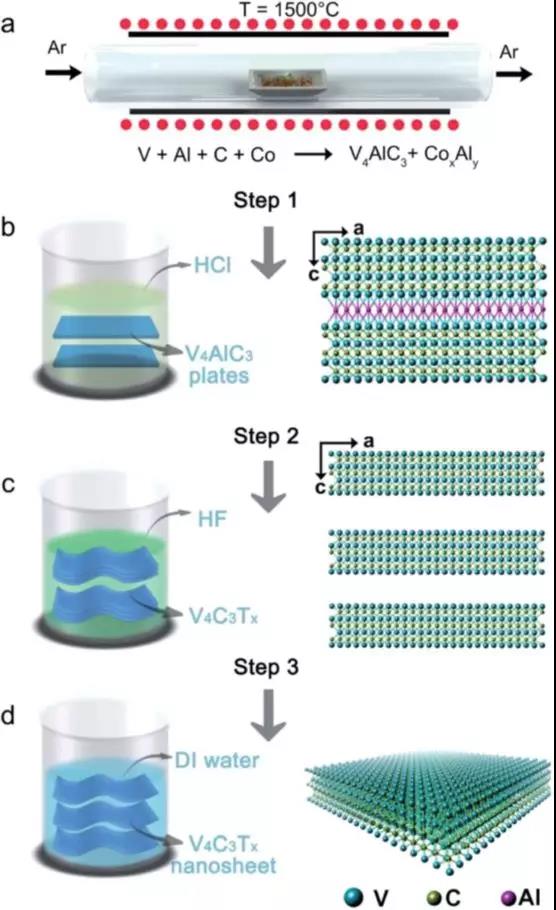
Figure 1. Schematic diagram of the synthesis, structure, and geometry of two-dimensional V 4 C 3 T x MXene.
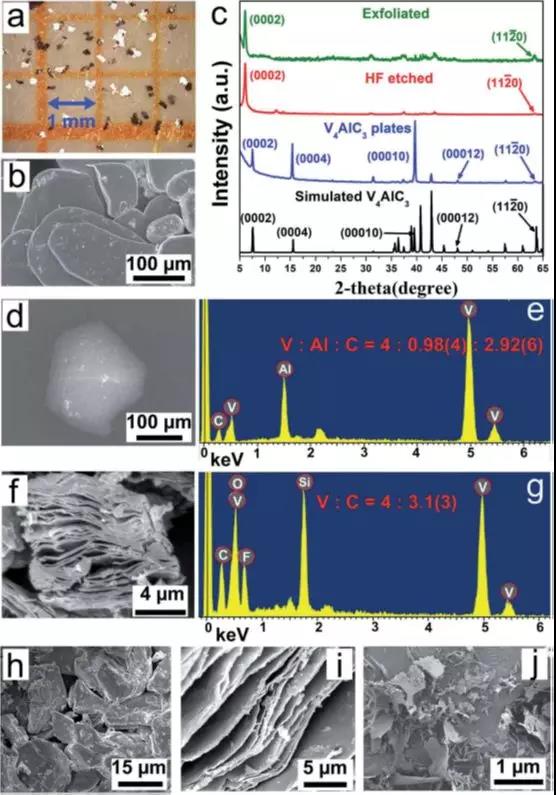
Figure 2. Characterization and analysis of V 4 AlC 3 before and after HF treatment .
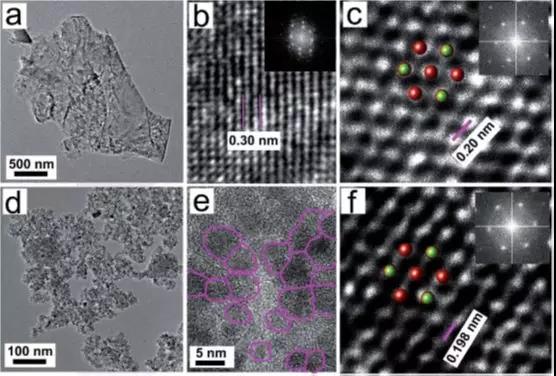
Figure 3. TEM characterization of multilayer stripped V 4 C 3 T x nanosheets and quantum dots.
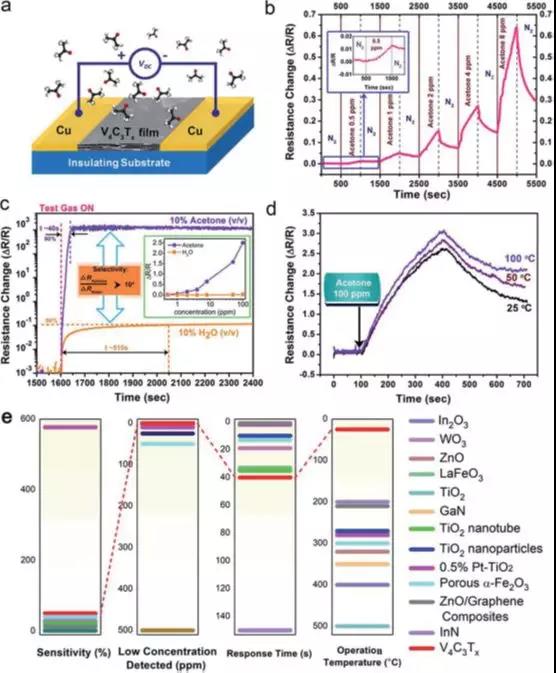
Figure 4. Acetone sensing performance of theprepared V 4 C 3 T x device.
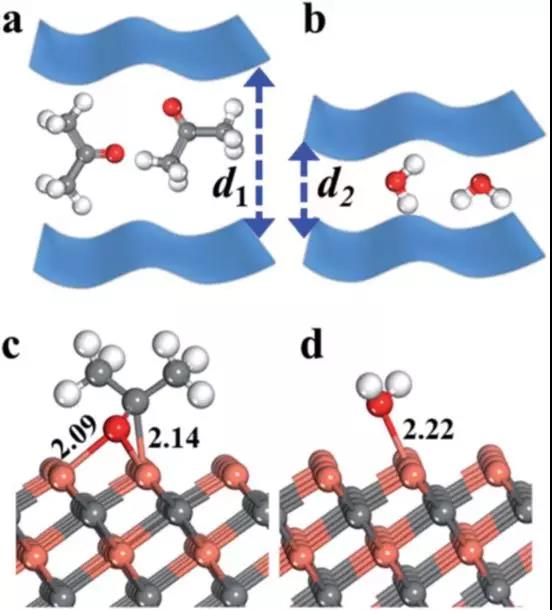
Figure 5. Schematic diagram of the V 4 C 3 T x membrane sensing response to the target substance and the structure optimized by DFTfor the best adsorption effecton the V 4 C 3 monolayer.
[Summary of this article]
In this paper, V 4 AlC 3 single crystal with high quality was synthesized by solid state reaction . HF etched away by using an aqueous solution of V . 4 AlC . 3 of Al layer was a prepared species novel MXene phase, V . 4 C . 3 T X , and using XRD, XPS, EDX and other means were characterized. After HF treatment, V 4 C 3 T x becomes a semiconductor. It is worth noting that the V 4C 3 T x- based acetone sensor has a low operating temperature of 25 ¡ã C, a low detection limit of 1 ppm, and high selectivity to acetone in a mixed gas of acetone and water vapor, so that it can be used. For the diagnosis of diabetes. In addition, we use DFT calculations to explore the mechanisms by which molecular size and adsorption behavior lead to higher selectivity of acetone over water vapor. V 4 C 3 T x has good acetone sensing performance and is a promising type I diabetes sensor. The combination of experimental results and theoretical research provides a theoretical basis for the design and production of new high-performance acetone sensors.
Literature link:
https://dx.doi.org/10.1039/c9ra09069j .
Source: MXene Frontier

| Reminder: Beijing Beike New Material Technology Co., Ltd. supplies products only for scientific research, not for humans |
| All rights reserved © 2019 beijing beike new material Technology Co., Ltd ¾©ICP±¸16054715-2ºÅ |